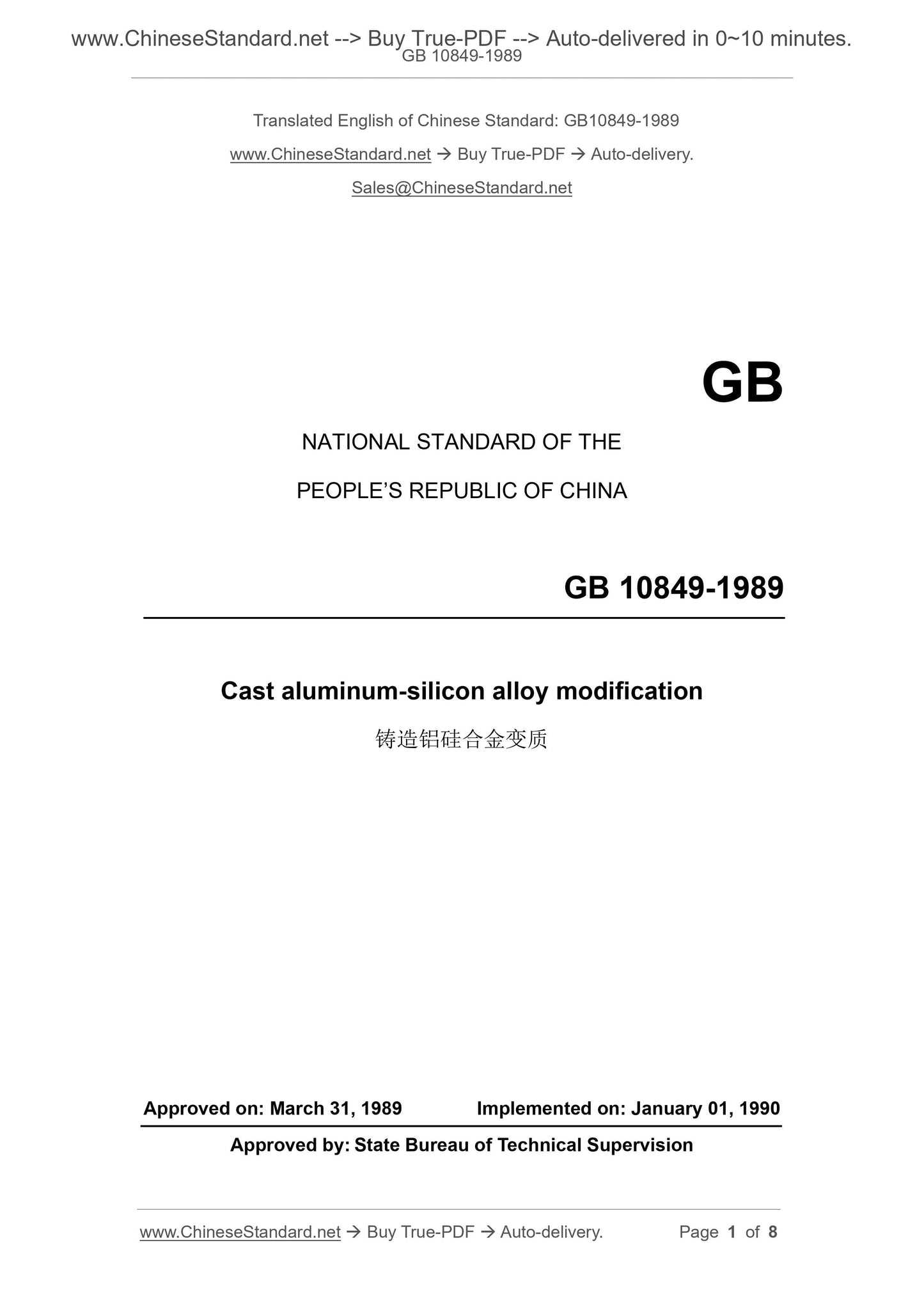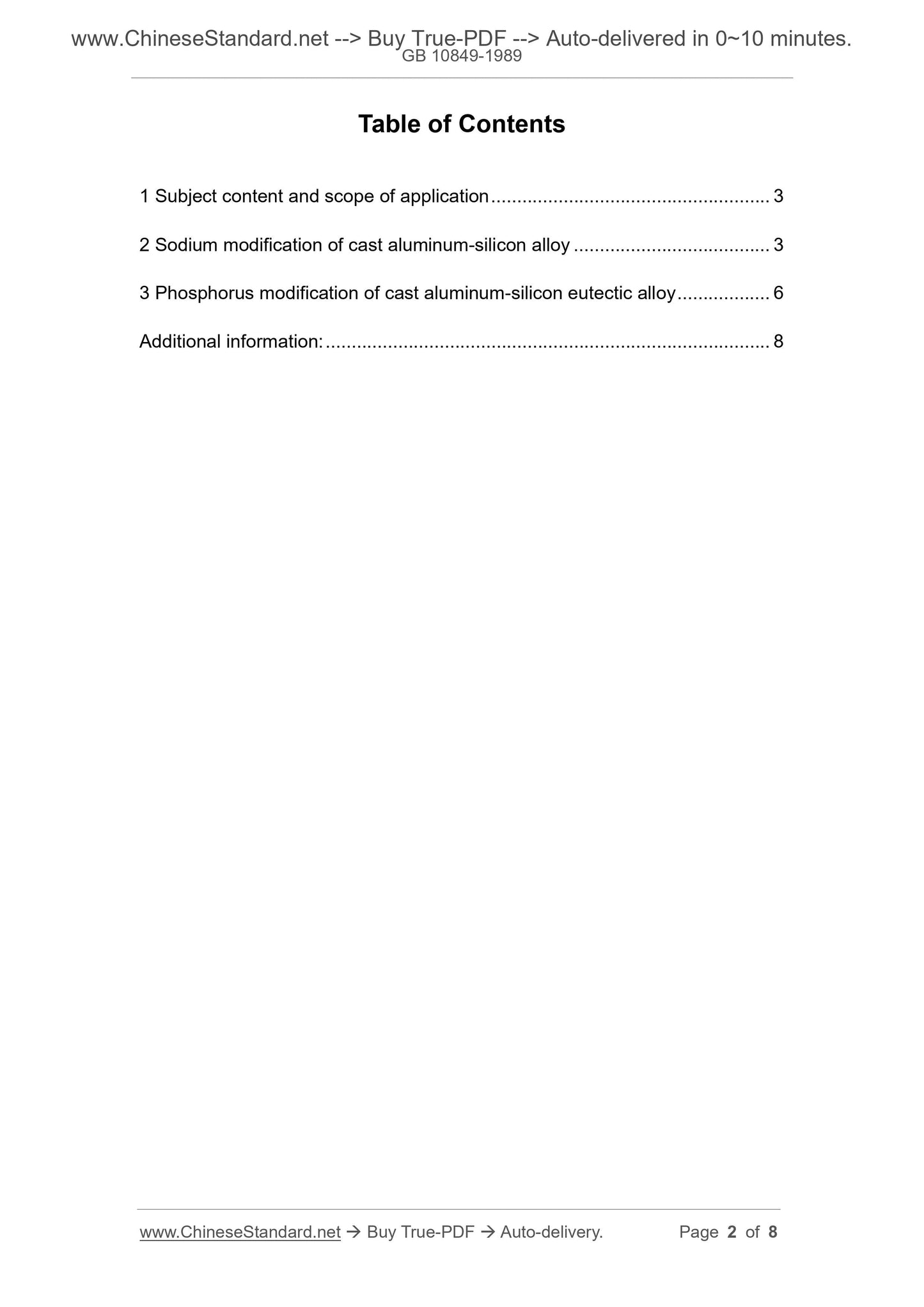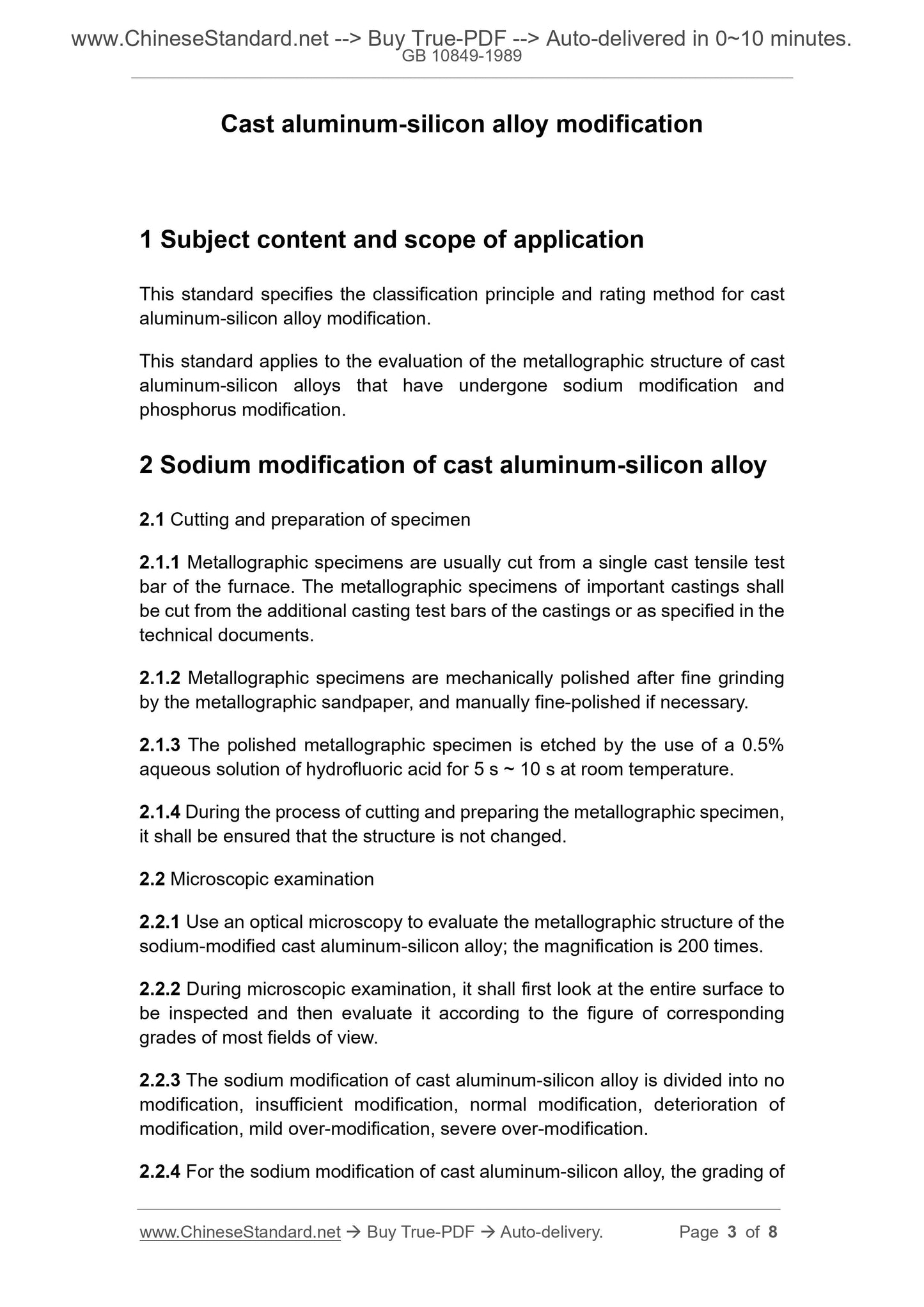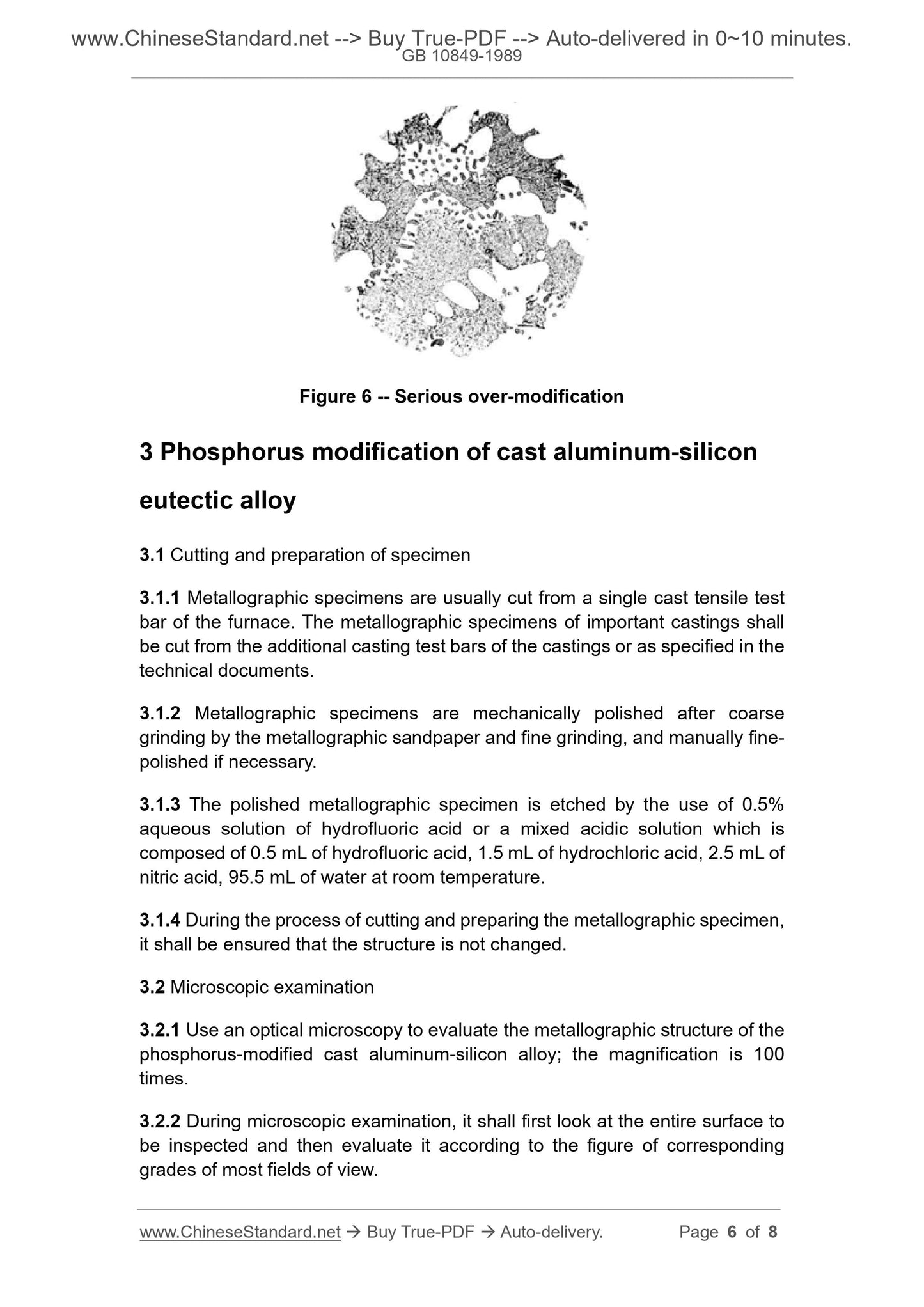1
/
of
4
www.ChineseStandard.us -- Field Test Asia Pte. Ltd.
GB 10849-1989 English PDF
GB 10849-1989 English PDF
Regular price
$165.00
Regular price
Sale price
$165.00
Unit price
/
per
Shipping calculated at checkout.
Couldn't load pickup availability
GB 10849-1989: Cast aluminium-silicon alloys--Modification
Delivery: 9 seconds. Download (and Email) true-PDF + Invoice.Get Quotation: Click GB 10849-1989 (Self-service in 1-minute)
Newer / historical versions: GB 10849-1989
Preview True-PDF
Scope
This standard specifies the classification principle and rating method for castaluminum-silicon alloy modification.
This standard applies to the evaluation of the metallographic structure of cast
aluminum-silicon alloys that have undergone sodium modification and
phosphorus modification.
Basic Data
| Standard ID | GB 10849-1989 (GB10849-1989) |
| Description (Translated English) | Cast aluminium-silicon alloys--Modification |
| Sector / Industry | National Standard |
| Classification of Chinese Standard | J31 |
| Word Count Estimation | 4,432 |
| Date of Issue | 3/31/1989 |
| Date of Implementation | 1/1/1990 |
Share







